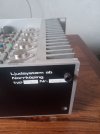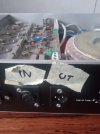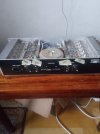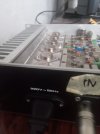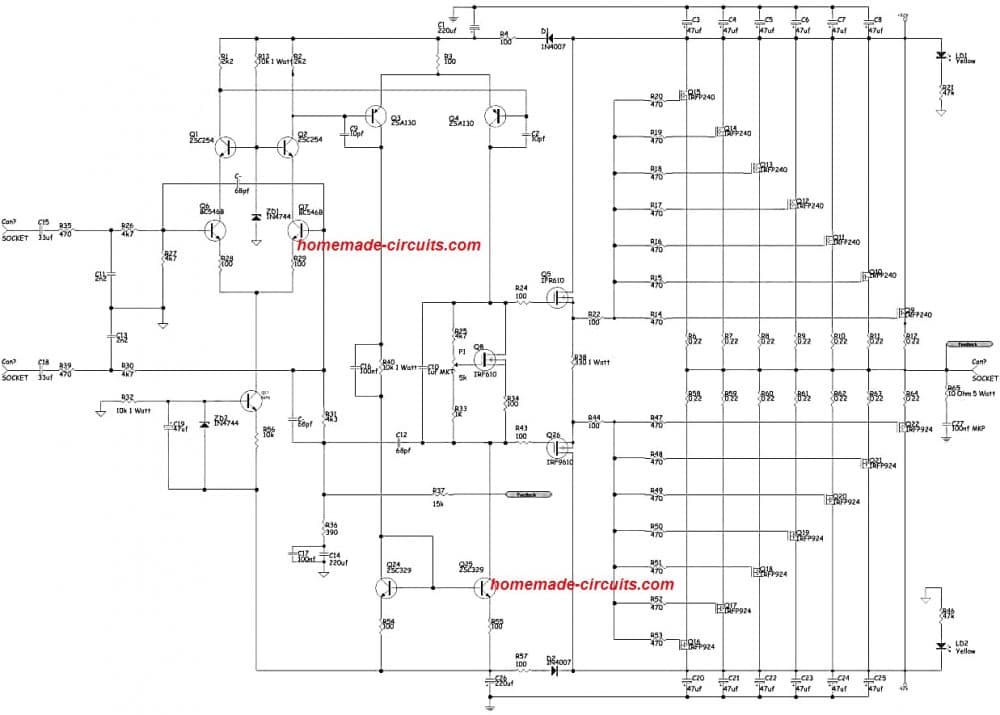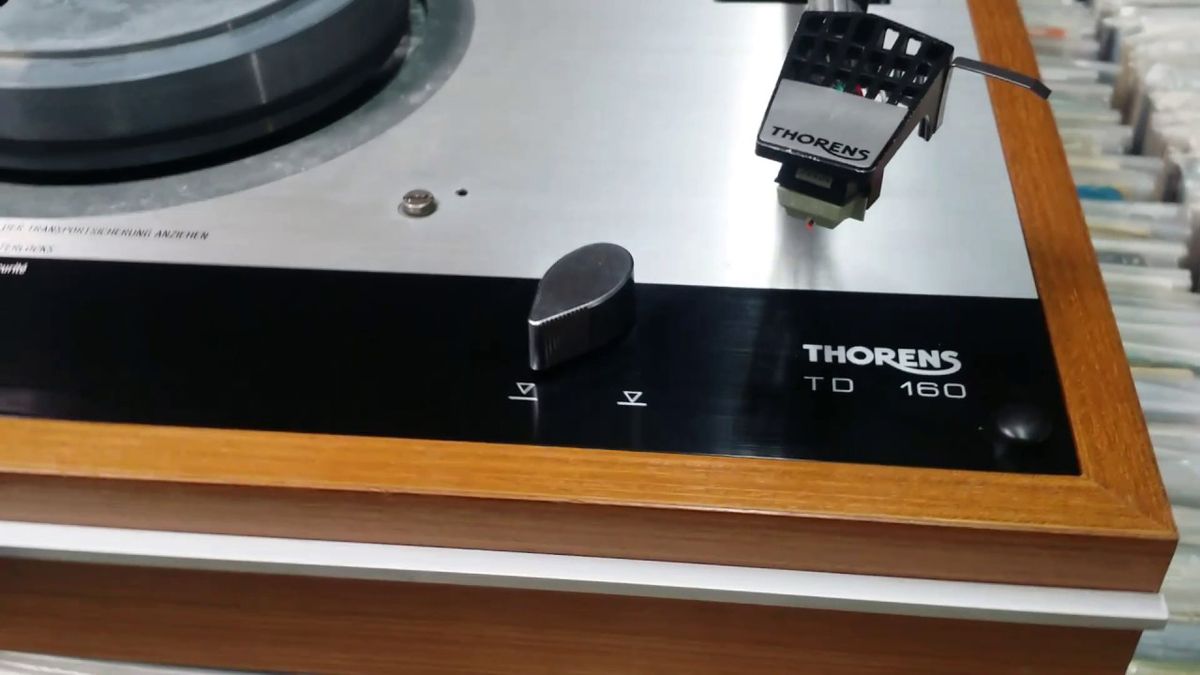DanielT
Major Contributor
Why 12 power transistors in a class AB (?)120 W (?) amplifier in .. 4-8 Ohm (?)
What is the point of 6 power transistors per channel in such an amplifier? Information and pictures below .
I would be very grateful for clarification. The stuff works, but I'm just curious.
Some facts. Sela, a Power amplifier, built sometime in the 80's. Unfortunately, there are no facts about it. It has probably mostly been used for PA. Maybe class AB, but I do not know.
Well, if I compare with a hifi intended vintage amplifier, from about the same time period, a Luxor 7082 integrated at 70 W in 4 Ohm, it has only two power transistors per channel.
Does it have to do with the fact that a power amplifier is built to withstand tough conditions and thus so many power transistors? To minimize the risk of burning them? Is so many transistors (of that type) needed in it to be able to handle what the transformer can pump out?
Will there be, in general, better hifi sound (less risk of clipping, distortion) if you use several power transistors? To distribute the effect between them, so they do not have to "work" so much? Is it not becoming more difficult to get them to interact, to integrate them into a well-functioning whole?
As you can see, fairly basic questions about construction, design regarding amplifiers. Therefore, I think this thread fits on this part of the forum.
Facts:
Power amplifier brand Sela:
Power, I guess 2x120 W (in ...? Ohm).
Transistors: 2N3773 (6 per channel)
Electrolyte capacitors in the power supply: 4700 uF, 63 V (times2, per channel, so 9400 uF, 126 V per channel),
Fuse, see picture
Class amplifier? No idea AB, maybe ..


Transistors: 2N3773:

________
Integrated amplifier Luxor 7082 A.
It was easier ..
 www.hifiengine.com
Power: 2x70 W in 4 Ohm.
www.hifiengine.com
Power: 2x70 W in 4 Ohm.
Transistors: Two D718, two B688 (the green ones)
Electrolyte capacitors in the power supply: 50V, 10,000 uF



A little more pictures of them. I mostly waffle in that thread, but you see a little more pictures. I take the signal from the pre amp section of the Luxor and feed Selan with that signal.

 audiosciencereview.com
audiosciencereview.com
Edit:
I guess in and of itself that if I took out the multimeter, measure a little plus together with Ohm's law , it is possible to get a decent idea of the effect on the power amplifier, Sela.I have not, yet, really figured out how to do it per se.
What is the point of 6 power transistors per channel in such an amplifier? Information and pictures below .
I would be very grateful for clarification. The stuff works, but I'm just curious.
Some facts. Sela, a Power amplifier, built sometime in the 80's. Unfortunately, there are no facts about it. It has probably mostly been used for PA. Maybe class AB, but I do not know.
Well, if I compare with a hifi intended vintage amplifier, from about the same time period, a Luxor 7082 integrated at 70 W in 4 Ohm, it has only two power transistors per channel.
Does it have to do with the fact that a power amplifier is built to withstand tough conditions and thus so many power transistors? To minimize the risk of burning them? Is so many transistors (of that type) needed in it to be able to handle what the transformer can pump out?
Will there be, in general, better hifi sound (less risk of clipping, distortion) if you use several power transistors? To distribute the effect between them, so they do not have to "work" so much? Is it not becoming more difficult to get them to interact, to integrate them into a well-functioning whole?
As you can see, fairly basic questions about construction, design regarding amplifiers. Therefore, I think this thread fits on this part of the forum.
Facts:
Power amplifier brand Sela:
Power, I guess 2x120 W (in ...? Ohm).
Transistors: 2N3773 (6 per channel)
Electrolyte capacitors in the power supply: 4700 uF, 63 V (times2, per channel, so 9400 uF, 126 V per channel),
Fuse, see picture
Class amplifier? No idea AB, maybe ..
Transistors: 2N3773:
________
Integrated amplifier Luxor 7082 A.
It was easier ..
Luxor 7082 Stereo Integrated Amplifier Manual | HiFi Engine
Transistors: Two D718, two B688 (the green ones)
Electrolyte capacitors in the power supply: 50V, 10,000 uF
A little more pictures of them. I mostly waffle in that thread, but you see a little more pictures. I take the signal from the pre amp section of the Luxor and feed Selan with that signal.

Project sub output
An old amplifier Luxor 7082 A. I connected a high to low level converter on the speaker outputs, to be able to connect an active subwoofer. Connected in parallel, together with the cables to the speakers. The converter: My friend said: why not take the signal directly from the pre amp section...
 audiosciencereview.com
audiosciencereview.com
Edit:
I guess in and of itself that if I took out the multimeter, measure a little plus together with Ohm's law , it is possible to get a decent idea of the effect on the power amplifier, Sela.I have not, yet, really figured out how to do it per se.
Last edited:


